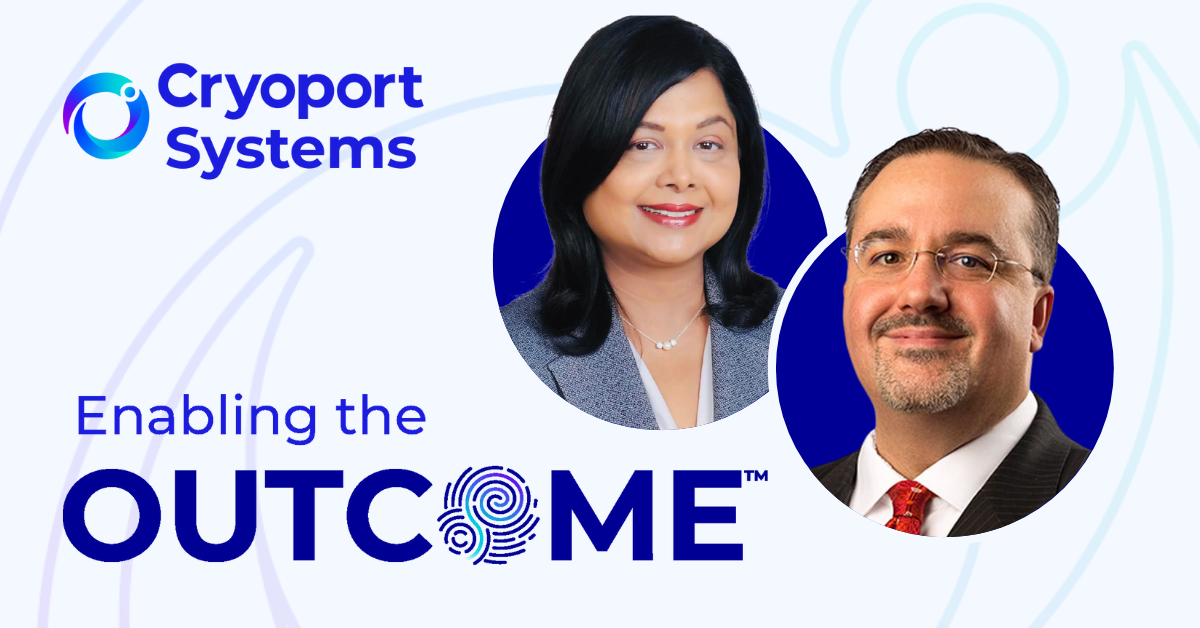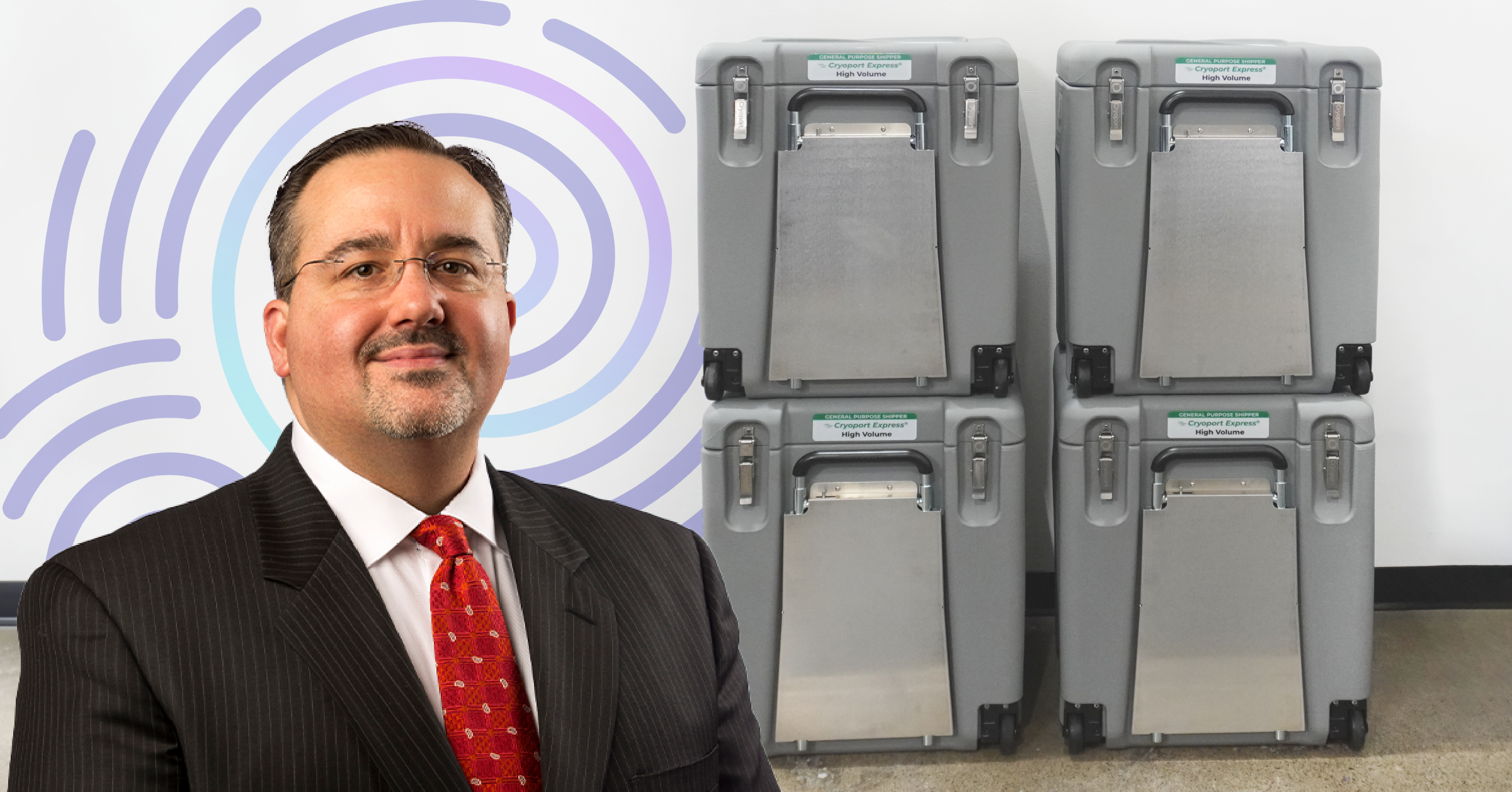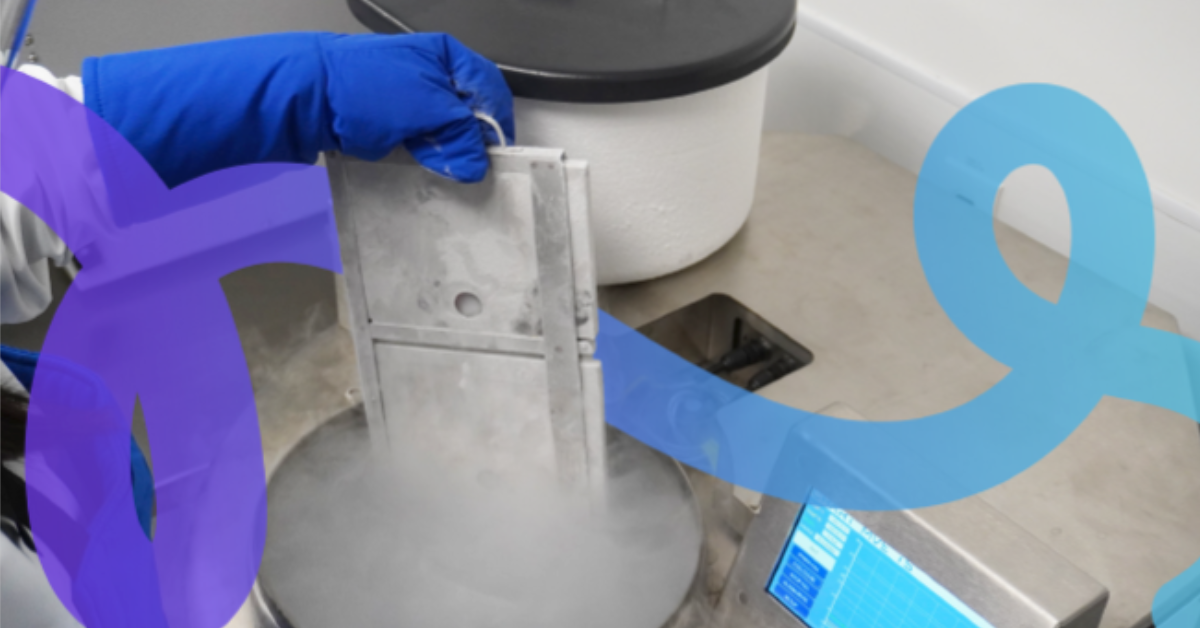Ensuring Patient Impact in Advanced Therapy Logistics: A Conversation with Cryoport Systems’ Experts
The logistics behind advanced therapies aren’t just about moving shipments from point A to point B, they’re about protecting the integrity of life-saving treatments and ensuring that patients receive them without compromise. Following their discussion at Advanced Therapies Week 2025, we sat down with Aruna Mor, Chief Commercial Officer, and Mike Dybicz, Senior Vice President & Chief Product Development Officer, to dive deeper into how Cryoport Systems prioritizes patient impact at every step of the supply chain.
Q: When we talk about the patient at the center of the supply chain, what does that really mean in practice?
Aruna Mor: Too often, logistics is thought of as a back-end function, something that happens behind the scenes. However, in cell and gene therapy, logistics is at the heart of patient access. These are not off-the-shelf treatments; they are living therapies, often sourced from the patients themselves. If the chain of custody or chain of condition is broken, that therapy might not be viable, and for many patients, there’s no second chance.
That’s why we approach logistics from the patient’s perspective. We ask: What risks could disrupt this journey? How do we design solutions that eliminate those risks? How do we make sure that when a patient’s therapy arrives, it’s exactly as intended?
Mike Dybicz: To build on that, patient impact isn’t just about what happens inside the shipping container, it’s also about the environment around it. We’ve spent a lot of time working directly with clinical sites, pharmacies, and therapy developers to understand their workflows. For example, a pharmacist handling a CGT therapy might not have time to track down a dolly or maneuver bulky equipment. That’s why we designed mobility into our latest shipping system. It seems like a small detail, but it’s one that directly impacts how smoothly a patient’s therapy moves through the clinical process.
Q: Cryoport Systems has been developing solutions for over 15 years. What’s the biggest change you’ve seen in how patient needs are considered in CGT logistics?
Mike Dybicz: The biggest shift is that we’re no longer designing solutions in a vacuum. Years ago, shipping systems were largely adaptations of what had been used in biologics. Now, we’re building purpose-driven solutions that take real-world conditions into account.
A good example is our latest shipper, the Cryoport Express® Cryogenic HV3 Shipping System. Instead of using traditional cylindrical designs, which have their limitations, we reimagined the form factor to improve stability, handling, and space efficiency. That means fewer transit delays, easier clinical adoption, and ultimately, a better patient experience.
Aruna Mor: Another major change is the role of data. We now have millions of data points on lane performance, environmental factors, and handling conditions. That allows us to be predictive rather than reactive. If we see that a specific shipping route has a history of temperature fluctuations, we can proactively adjust the shipment plan or implement safeguards before the issue arises.
This kind of intelligence-driven logistics reduces risk, improves consistency, and gives therapy developers and clinicians more confidence that what they’re sending out will arrive intact.
Q: Risk mitigation is a big part of CGT logistics. What’s one risk that’s often underestimated?
Aruna Mor: Cross-contamination. It’s easy to assume that once a therapy is sealed inside a shipper, it’s safe. But that’s not always the case. Every time a shipping system is reused, there’s a risk that residual biological material or environmental contaminants could compromise the next therapy it carries.
That’s why we developed Veri-Clean®, the industry’s first validated decontamination process for CGT shipping containers. It ensures that every shipper is requalified before reuse, eliminating potential cross-contamination risks. This isn’t just about compliance; it’s about patient safety.
Mike Dybicz: Another risk that’s underestimated is supply chain accessibility. The reality is that these therapies don’t just go from major biotech hubs to academic medical centers, they have to reach patients wherever they are. That means ensuring global coverage with local expertise.
For example, our newest supply chain hub in Stevenage, UK, is a strategic location that enables faster, more reliable access to CGT treatments across Europe. The same applies to our facilities in Houston and Belgium. We’re thinking ahead to anticipate what patient needs will look like in five or ten years and building infrastructure to support that.
Q: What excites you most about the future of patient-centric logistics?
Mike Dybicz: I’m excited about the continued integration of technology. Smart condition monitoring, AI-driven risk assessment, and even real-time intervention capabilities are changing what’s possible. We’re not far from a future where every stakeholder — clinicians, sponsors, etc. — has full visibility into where a therapy is, what condition it’s in, and what’s happening in real-time. That level of transparency will be a game-changer.
Aruna Mor: For me, clearly designing solutions with chain of condition is critical, however equally important is the shift in mindset. The industry is moving away from seeing logistics as just a service and toward recognizing it as a critical enabler of patient outcomes. Every decision we make, every material we select, every product we develop, and every process we implement, is done with the understanding that a patient’s life is on the other end of that shipment. That responsibility drives everything we do.
At Cryoport Systems, securing the future of medicine means ensuring that patients receive their therapies safely, reliably, and without compromise. A special thank you to Aruna Mor and Mike Dybicz for sharing their insights and expertise on how patient-centered logistics are shaping the future of advanced therapies.
As the field of CGT continues to evolve, we are committed to being a trusted partner at every stage. By combining deep industry expertise, cutting-edge technology, and a global infrastructure, we work alongside our clients to navigate challenges, mitigate risks, and enable the successful delivery of life-changing therapies. Together, we are not just advancing the temperature-controlled supply chain, we’re helping to shape the future of medicine – ensuring that patients worldwide receive the treatments they need, when they need them, without compromise.



